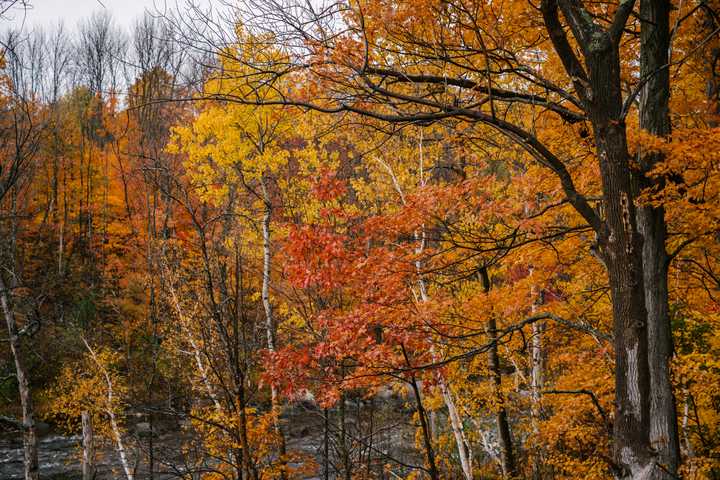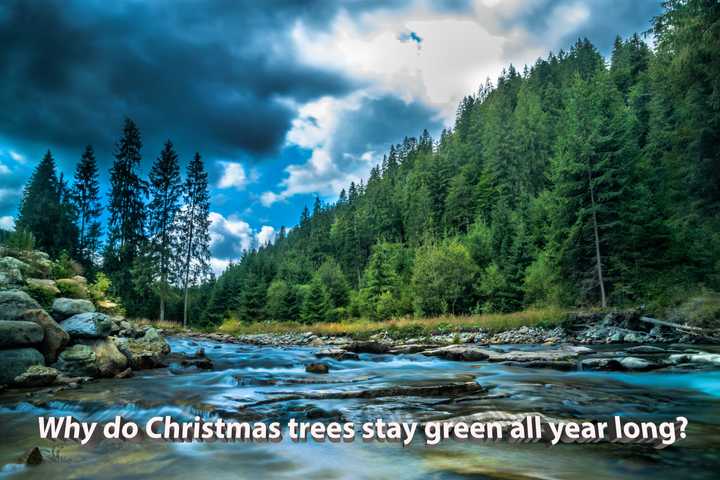
Everything you need to know about stem cells
What are stem cells, and what makes them so unique? What are the different types of stem cells, and how have they impacted modern medical science? Here is us answering all your questions about stem cells.

It’s that time of the year again when the days are getting shorter and gloomier. If you live in the temperate or polar regions of the northern hemisphere, the melancholic effect may be even more exaggerated due to the cold frosty days. The silver lining though? Christmas is here! The delicious smell of freshly baked cakes, the jingle of the Christmas carols and most importantly the glittering Christmas trees. Could we have asked for anything better? While many trees around us shed away their leaves, turning almost lifeless, it’s encouraging to surround ourselves with those luscious green Christmas trees.
But ever wondered why some trees drop all their leaves come winter, while some manage to cling onto them, the best example being the Christmas trees? What’s the science behind these miraculously evergreen trees? Let’s get a bit geeky this Christmas and find out, shall we?
All the seasonal changes we experience throughout the year can be owed to the movement of the earth around the sun, and it’s slightly tilted axis. The seasonal changes get more and more pronounced as we move away from the equator. Now, just like we humans across the planet adapt our food and clothing habits based on the seasonal changes, the vegetation growing around us employ their own mechanisms to adapt too. One of the most interesting amongst these are those of trees. In order to survive the harsh seasonal changes, trees tend to adopt one of the two contrasting habits. They either drop off all their leaves during the winter months, or make specialised leaves that they can hold onto throughout the year. The former are called deciduous trees whereas the latter are called evergreen trees.
Why do trees do this and how does it help them? To understand this we need to dive into a little bit of fundamental botany.
I know this can seem like a high school question, but let’s brush up this basic concept. Plants are organisms that have the ability to use solar energy to fix carbon. They do this by a process called photosynthesis, wherein the plants take in the carbon dioxide from the air and water from the soil to convert it into glucose and oxygen. This process requires the participation of a pigment called chlorophyll (largely found in the leaves), and solar energy from the sun. The oxygen is released out, whereas the glucose is used to derive energy by the process of respiration, similar to that in humans.
The energy derived by the plant can now be used to grow and maintain its different parts, like the stems, roots, leaves and flowers. But the cost of constructing these parts, and the benefits those parts provide to the plant can vary. For example, a leaf is an organ that weighs a high investment cost on the plant, owing to all the chlorophyll that it will have to synthesise. However being the chief photosynthetic organ, it also provides high returns on its investment.
Now the significant seasonal shifts occurring throughout the year, can greatly affect the amount of sunlight and water available for photosynthesis. Hence trees have evolved to do interesting things with their costly, yet beneficial leaves.

Deciduous trees. Photo by Marta Wave from Pexels.
Deciduous trees invest in their leaves in the warmer months. This is the time when they pump in large amounts of nitrogen (a key component of chlorophyll) into their leaves, accelerating photosynthetic rates, maximising carbon fixation (glucose production). During the winters, when the sunlight is lesser, they stop investing in their leaves, hence shedding them off completely. They depend on their glucose reserves (which they plentifully created during the growing season) to drive respiration throughout the leafless period. A good example of this is the maple tree, which has lush green leaves in the warmer months, but sheds them away in the colder months.

Evergreen coniferous forest. Photo by Snapwire from Pexels.
On the other hand, evergreen trees hold on to their leaves all year long. How do they manage to do this? By investing less nutrients in their leaves. Evergreen trees maintain lower nitrogen levels in their leaves, which allows them to invest in their leaves throughout the year. Although this brings down the rate of photosynthesis, it allows them to continuously fix (Wyka and Oleksyn, 2014) small amounts of carbon through the year.
In short, deciduous trees fix large amounts of carbon for a short period of time, whereas evergreen trees fix small amounts of carbon, but all year long.
Additionally, the evergreen trees in many parts of the globe need to survive not just the low sunlight, but also need to tolerate the cold, frosty and dry weather conditions. They hence have thick cuticles on their leaves to prevent winter desiccation and thicker cell walls to lower dehydration. A common example would be the needle-like leaves of the evergreen conifers (cone bearing trees), which commonly grow in the colder regions of the northern hemisphere.

Purchasing trees for Christmas. Photo by Any Lane from Pexels.
Now it is not difficult to imagine why evergreen conifers are hugely celebrated as the popular Christmas trees during the cold wintery Christmas season. In the ancient times, hanging evergreen boughs reminded people of all the lush green trees that would come back to life in the forthcoming warmer months. It is however popularly believed that Martin Luther, the 16th century German protestant, was the first to bring the evergreen conifer home as a form of celebration. Inspired by the natural expanse of evergreen conifers in the midst of all the twinkling stars, he thought of recreating a similar scene at home, by decorating a coniferous tree with lighted candles. Hence the tradition of bringing home Christmas trees was born, which continues till date.
The Christmas trees that we bring home now-a-days come in all sizes and varieties. We can choose from the many coniferous options including Fir, Pine, Spruce, Cypress and Cedar, each having innumerable species within its domain.
It’s interesting how seasonal changes, and hence the ecological changes that ensue as a result, influence our culture so immensely. It may be easy to find many other such traditions across the globe, that have some form of scientific relevance to it. Something to ponder about!